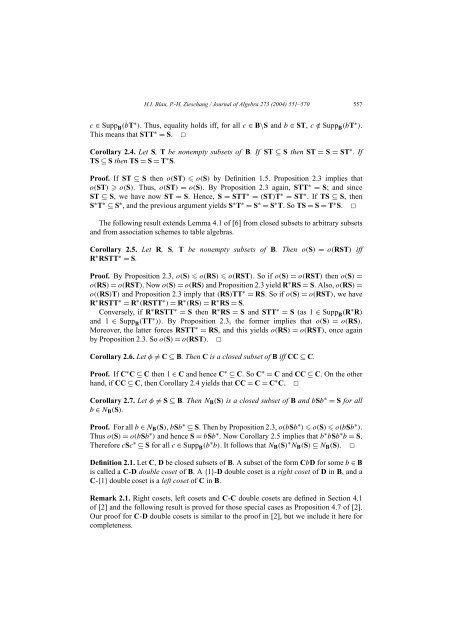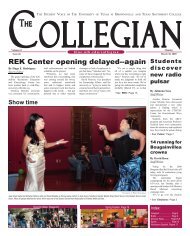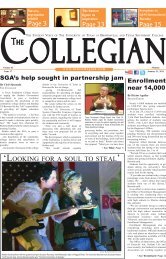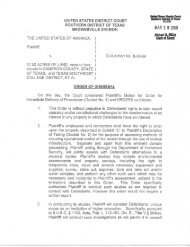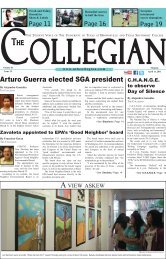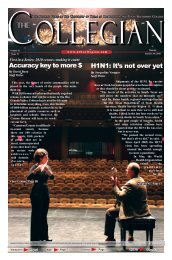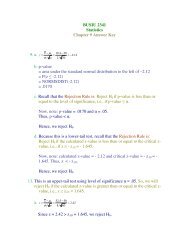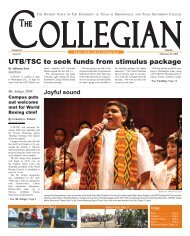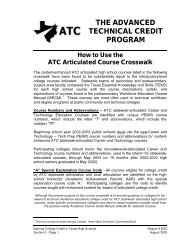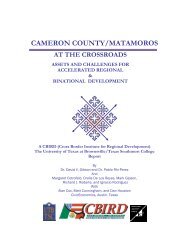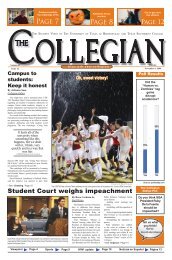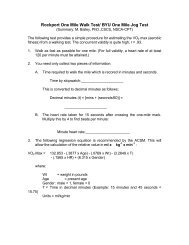Sylow theory for table algebras, fusion rule algebras, and ... - blue
Sylow theory for table algebras, fusion rule algebras, and ... - blue
Sylow theory for table algebras, fusion rule algebras, and ... - blue
You also want an ePaper? Increase the reach of your titles
YUMPU automatically turns print PDFs into web optimized ePapers that Google loves.
H.I. Blau, P.-H. Zieschang / Journal of Algebra 273 (2004) 551–570 557<br />
c ∈ Supp B (bT ∗ ). Thus, equality holds iff, <strong>for</strong> all c ∈ B\S <strong>and</strong> b ∈ ST, c/∈ Supp B (bT ∗ ).<br />
This means that STT ∗ = S. ✷<br />
Corollary 2.4. Let S, T be nonempty subsets of B. If ST ⊆ S then ST = S = ST ∗ .If<br />
TS ⊆ S then TS = S = T ∗ S.<br />
Proof. If ST ⊆ S then o(ST) o(S) by Definition 1.5. Proposition 2.3 implies that<br />
o(ST) o(S). Thus, o(ST) = o(S). By Proposition 2.3 again, STT ∗ = S; <strong>and</strong> since<br />
ST ⊆ S, wehavenowST = S. Hence, S = STT ∗ = (ST)T ∗ = ST ∗ .IfTS ⊆ S, then<br />
S ∗ T ∗ ⊆ S ∗ , <strong>and</strong> the previous argument yields S ∗ T ∗ = S ∗ = S ∗ T.SoTS = S = T ∗ S. ✷<br />
The following result extends Lemma 4.1 of [6] from closed subsets to arbitrary subsets<br />
<strong>and</strong> from association schemes to <strong>table</strong> <strong>algebras</strong>.<br />
Corollary 2.5. Let R, S, T be nonempty subsets of B. Then o(S) = o(RST) iff<br />
R ∗ RSTT ∗ = S.<br />
Proof. By Proposition 2.3, o(S) o(RS) o(RST). Soifo(S) = o(RST) then o(S) =<br />
o(RS) = o(RST).Nowo(S) = o(RS) <strong>and</strong> Proposition 2.3 yield R ∗ RS = S.Also,o(RS) =<br />
o((RS)T) <strong>and</strong> Proposition 2.3 imply that (RS)TT ∗ = RS. Soifo(S) = o(RST), wehave<br />
R ∗ RSTT ∗ = R ∗ (RSTT ∗ ) = R ∗ (RS) = R ∗ RS = S.<br />
Conversely, if R ∗ RSTT ∗ = S then R ∗ RS = S <strong>and</strong> STT ∗ = S (as 1 ∈ Supp B (R ∗ R)<br />
<strong>and</strong> 1 ∈ Supp B (TT ∗ )). By Proposition 2.3, the <strong>for</strong>mer implies that o(S) = o(RS).<br />
Moreover, the latter <strong>for</strong>ces RSTT ∗ = RS, <strong>and</strong> this yields o(RS) = o(RST), once again<br />
by Proposition 2.3. So o(S) = o(RST). ✷<br />
Corollary 2.6. Let φ = C ⊆ B.ThenC is a closed subset of B iff CC ⊆ C.<br />
Proof. If C ∗ C ⊆ C then 1 ∈ C <strong>and</strong> hence C ∗ ⊆ C. SoC ∗ = C <strong>and</strong> CC ⊆ C. On the other<br />
h<strong>and</strong>, if CC ⊆ C, then Corollary 2.4 yields that CC = C = C ∗ C. ✷<br />
Corollary 2.7. Let φ = S ⊆ B. ThenNB(S) is a closed subset of B <strong>and</strong> bSb ∗ = S <strong>for</strong> all<br />
b ∈ NB(S).<br />
Proof. For all b ∈ NB(S), bSb ∗ ⊆ S. Then by Proposition 2.3, o(bSb ∗ ) o(S) o(bSb ∗ ).<br />
Thus o(S) = o(bSb ∗ ) <strong>and</strong> hence S = bSb ∗ . Now Corollary 2.5 implies that b ∗ bSb ∗ b = S.<br />
There<strong>for</strong>e cSc ∗ ⊆ S <strong>for</strong> all c ∈ Supp B (b ∗ b). It follows that NB(S) ∗ NB(S) ⊆ NB(S). ✷<br />
Definition 2.1. Let C, D be closed subsets of B. A subset of the <strong>for</strong>m CbD <strong>for</strong> some b ∈ B<br />
is called a C-D double coset of B. A{1}-D double coset is a right coset of D in B, <strong>and</strong>a<br />
C-{1} double coset is a left coset of C in B.<br />
Remark 2.1. Right cosets, left cosets <strong>and</strong> C-C double cosets are defined in Section 4.1<br />
of [2] <strong>and</strong> the following result is proved <strong>for</strong> those special cases as Proposition 4.7 of [2].<br />
Our proof <strong>for</strong> C-D double cosets is similar to the proof in [2], but we include it here <strong>for</strong><br />
completeness.


